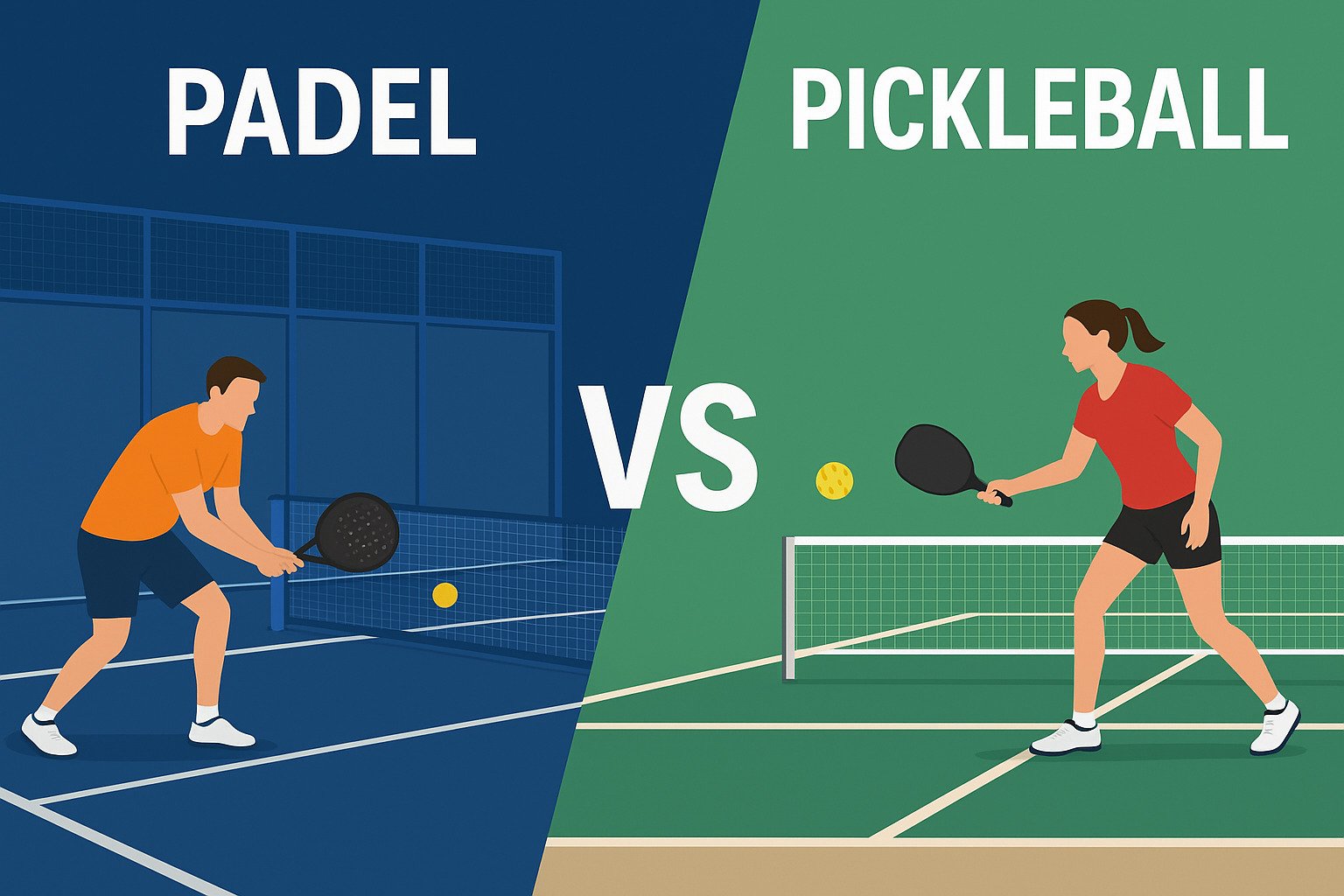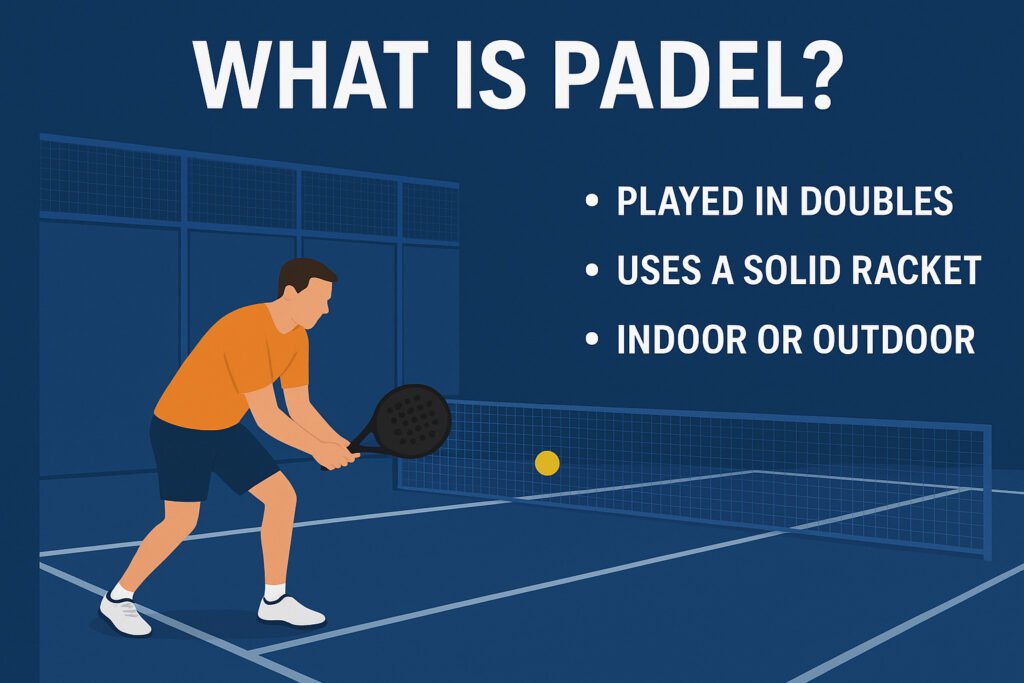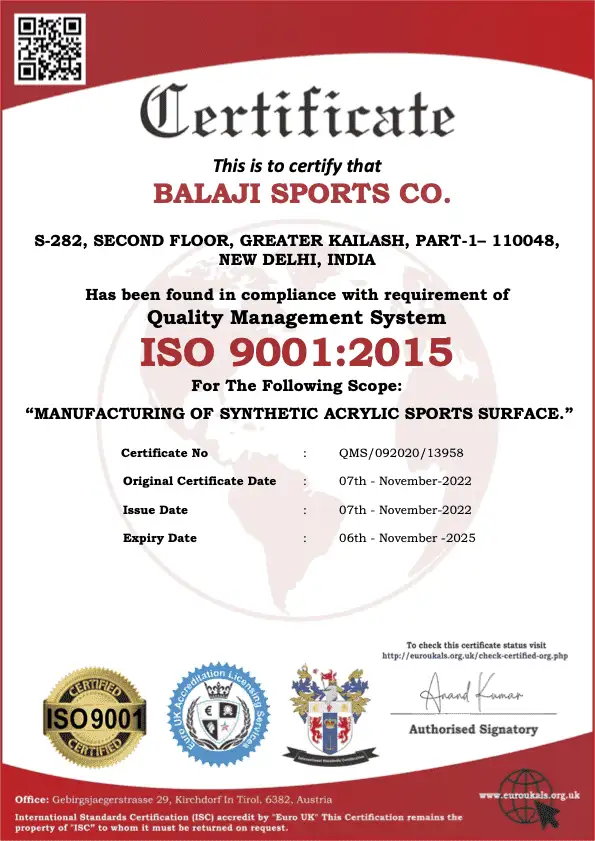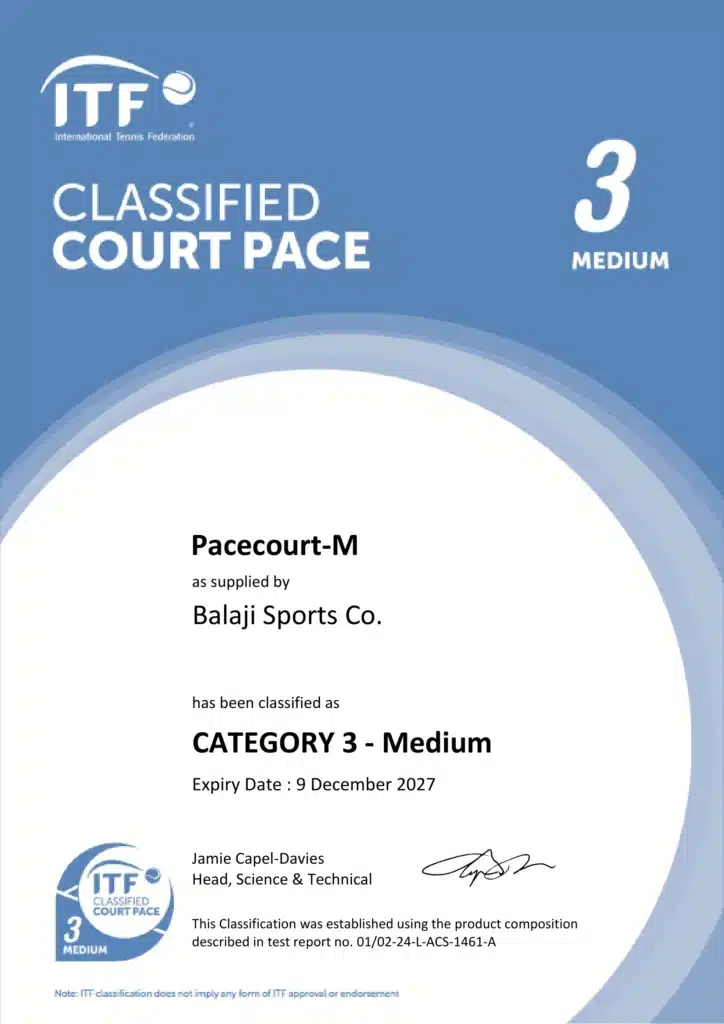
In recent years the world of racket sports has seen a big shift with the rise of two fantastic games — Padel vs Pickleball. Both have quickly grabbed the attention of sports enthusiasts, fitness lovers and even professional athletes looking for fast paced, social and accessible alternatives to traditional tennis.
While these sports share similarities in being easy to learn and fun to play they are very different in their origins, equipment, court design and gameplay style. Padel is often described as a mix of tennis and squash played on an enclosed court with glass walls, you get thrilling rebounds and long rallies. Pickleball is a combination of tennis, badminton and ping-pong played on a smaller court with a perforated plastic ball — perfect for players of all ages and skill levels.
In this blog we’ll break down the differences between padel and pickleball, we’ll cover everything from court size and rules to equipment and popularity so you can decide which sport is for you.
What is Padel?

Padel is a rapidly growing racket sport that blends the best features of tennis and squash. It was first invented in Mexico in 1969 by Enrique Corcuera and later gained massive popularity in Spain and Argentina, eventually spreading across Europe, the Middle East, and now Asia.
Padel is typically played in doubles format on an enclosed court that’s about one-third the size of a tennis court. The court is surrounded by glass or mesh walls, which players can use to rebound the ball — adding a strategic and exciting twist to the game.
Players use a solid, stringless racket made of composite materials with perforations and a pressurized tennis ball. The ball is served underhand, and points are scored much like in tennis. However, unlike tennis, the ball remains in play even after it bounces off the walls, making rallies longer and the gameplay more thrilling.
Padel is known for being easy to learn, low-impact, and highly social, which makes it appealing to beginners as well as experienced athletes. Its mix of technique, strategy, and teamwork creates a perfect balance between fun and competition.
What is Pickleball?

Pickleball is one of the fastest-growing sports in the world, combining elements of tennis, badminton, and table tennis. It was invented in 1965 in Washington, USA, by Joel Pritchard, Bill Bell, and Barney McCallum as a fun backyard game for families. Today, it has evolved into a competitive sport played globally, with professional leagues and tournaments.
Pickleball is played on a smaller court — about the size of a badminton court — with a solid paddle made of wood or composite materials and a lightweight plastic ball featuring holes (often called a “wiffle ball”). The game can be played in singles or doubles, making it versatile for different skill levels and age groups.
The sport uses a lower net and emphasizes strategy, precision, and quick reflexes rather than raw power. Serves are done underhand, and points can only be scored by the serving team. The rally style encourages close net play, fast exchanges, and tactical positioning — all while being easy on the joints.
Pickleball’s biggest appeal lies in its simplicity, inclusivity, and community-driven nature. It’s a sport where beginners can quickly get the hang of the game, yet professionals find endless depth in its strategy and shot placement.
Padel vs Pickleball: Key Differences
Although Padel and Pickleball share similarities as modern racket sports that encourage fun, fitness, and social play, they differ in several important ways — from court size and equipment to gameplay and scoring. Understanding these differences helps players choose the sport that best fits their style and preferences.
Here’s a quick comparison between Padel and Pickleball:
| Feature | Padel | Pickleball |
|---|---|---|
| Origin | Mexico (1969) | USA (1965) |
| Court Size | 20m x 10m (enclosed with glass or mesh walls) | 13.4m x 6.1m (open court, smaller) |
| Playing Format | Usually Doubles | Singles or Doubles |
| Court Surface | Artificial turf or synthetic flooring | Acrylic, concrete, or synthetic flooring |
| Racket/Paddle | Solid racket with holes, no strings | Flat paddle made of wood or composite materials |
| Ball Type | Pressurized tennis ball | Lightweight perforated plastic ball |
| Walls | Used for rebounds (like squash) | No walls — ball must stay within court lines |
| Serving Style | Underhand, below waist level | Underhand serve, diagonal to the opponent’s court |
| Scoring System | Same as tennis (15, 30, 40, game) | Points scored only by serving team; first to 11 or 15 |
| Speed & Style | Fast-paced with wall rebounds and teamwork | Strategic with slower rallies and precise placements |
| Popularity Regions | Europe, Middle East, Latin America | USA, Canada, Australia, India (emerging) |
Both games promote agility, coordination, and social interaction — but the gameplay experience differs.
- Padel offers a more dynamic and high-energy environment with wall rebounds and power shots.
- Pickleball focuses on strategy, positioning, and soft-touch play, making it more accessible to players of all ages.
Court Design & Flooring Differences
One of the most noticeable distinctions between padel and pickleball lies in their court design and flooring materials. Both sports have unique setups that influence the pace, bounce, and overall playing experience.
Padel Court Design
A padel court measures 20 meters long and 10 meters wide and is enclosed by glass or mesh walls on all sides. These walls are not just for boundary — they’re an active part of the game. The ball can rebound off them, allowing for longer and more tactical rallies.
The surface of a padel court is typically made from synthetic turf or artificial grass, which provides excellent traction, shock absorption, and consistent ball bounce. The flooring is often combined with a sand infill to improve grip and durability. Proper drainage systems are also integrated to prevent water accumulation, especially in outdoor courts.
Pickleball Court Design
In contrast, a pickleball court is smaller — 13.4 meters long and 6.1 meters wide — and does not have enclosing walls. It’s marked with clear boundary lines, similar to a badminton court, and divided by a low net that slightly resembles a tennis setup.
Pickleball courts are usually built on acrylic, concrete, or synthetic flooring, offering a hard and smooth surface for quick movements and predictable bounces. For indoor setups, polyurethane or vinyl flooring is preferred for added comfort and reduced impact on joints.
Key Difference
- Padel courts focus on wall play and cushioning, emphasizing control and power.
- Pickleball courts prioritize speed, precision, and simplicity, with open boundaries and a flat, hard surface.
Both sports require non-slip, durable, and low-maintenance flooring, but the design philosophy behind each caters to very different styles of play.
Equipment Comparison

While both padel and pickleball fall under the category of racket (or paddle) sports, their equipment differs significantly in design, material, and purpose. These differences directly affect gameplay, power, and control.
Padel Equipment
In padel, players use a solid racket — also known as a padel bat — that has no strings. Instead, it’s made of composite materials like carbon fiber, fiberglass, or EVA foam, with perforated holes to reduce air resistance and improve swing control.
- Racket Size: Typically up to 45.5 cm in length and 26 cm in width.
- Weight: Ranges between 340–390 grams.
- Shape Types: Round (control-focused), Teardrop (balanced), and Diamond (power-focused).
The ball used in padel is similar to a tennis ball but slightly smaller and less pressurized, allowing for lower bounce and better control during wall rebounds.
Padel rackets are designed for power, spin, and precision, especially when playing off the glass walls.
Pickleball Equipment
Pickleball uses a flat paddle instead of a stringed or holed racket. The paddle is made from wood, graphite, or composite materials with a smooth surface that helps in controlled and strategic play.
- Paddle Size: Maximum length of 43.2 cm and width of 24.1 cm.
- Weight: Usually between 200–250 grams, lighter than padel rackets.
- Grip: Cushioned handle for comfortable, prolonged play.
The ball is made of lightweight plastic and has 26 to 40 circular holes, depending on whether it’s designed for indoor or outdoor use. Outdoor balls are heavier and have smaller holes to resist wind, while indoor balls are lighter and offer better control.
Pickleball equipment promotes precision, quick reactions, and easy handling, making it ideal for all age groups, including beginners.
Summary of Equipment Differences
| Aspect | Padel | Pickleball |
|---|---|---|
| Racket/Paddle | Solid racket with holes, no strings | Flat paddle with solid surface |
| Material | Carbon fiber, fiberglass, EVA foam | Wood, graphite, or composite |
| Ball Type | Pressurized tennis-like ball | Plastic wiffle-style ball with holes |
| Average Weight | 340–390g | 200–250g |
| Play Focus | Power, spin, and wall play | Precision, placement, and strategy |
Gameplay Experience
When it comes to gameplay, padel and pickleball offer distinct experiences that cater to different player preferences. Both are social, easy to learn, and fun for all ages — but the way they’re played, and the skills they emphasize, set them apart.
Padel Gameplay Experience
Padel is a fast-paced, energetic sport that thrives on teamwork and strategy. It’s almost always played in doubles format, making communication and coordination essential. The presence of glass walls adds a unique dimension — balls can rebound, keeping rallies alive longer and encouraging creative shot-making.
Players need to master a mix of power shots, defensive lobs, and quick reflex volleys. Because of the enclosed court and wall play, positioning is crucial. Even though it’s dynamic, padel is less physically demanding than tennis, making it ideal for both recreational and competitive play.
The overall experience is intense, tactical, and social, with matches full of exciting rallies and quick exchanges.
Pickleball Gameplay Experience
Pickleball, in contrast, focuses more on strategy, precision, and control rather than raw power. The game can be played in singles or doubles, and the smaller court promotes close-range, tactical rallies.
The gameplay emphasizes placement over pace — smart positioning, gentle dinks near the net, and quick reflex volleys often determine the outcome. Because of the lightweight paddle and plastic ball, the game moves at a moderate pace, allowing players of all skill levels to compete comfortably.
Pickleball’s charm lies in its accessibility and community spirit. It’s common to see players of different ages enjoying casual matches, often in parks, clubs, or recreational centers.
Overall Difference
- Padel offers a high-energy, wall-rebound experience that rewards teamwork and fast reactions.
- Pickleball provides a tactical, control-based experience where patience, precision, and soft-touch play dominate.
Both sports deliver an exciting mix of competition and fun — whether you enjoy the adrenaline rush of power rallies or the thoughtful strategy of precision play.
Popularity and Global Reach
Both padel and pickleball have taken the world by storm, each carving out its own passionate community of players, clubs, and international events. While their growth paths differ, both sports share one thing in common — they’re among the fastest-growing racket sports globally.
Padel’s Global Popularity
Padel has witnessed explosive growth, especially across Europe, the Middle East, and Latin America. Originating in Mexico, it became immensely popular in Spain and Argentina, where it’s now a mainstream sport — second only to football in participation rates.
Countries like Italy, France, the UK, and the UAE have also embraced padel, with thousands of new courts being built every year. Even celebrities and professional athletes — including footballers like Lionel Messi and Neymar — have joined the craze, further boosting its appeal.
Organizations like the International Padel Federation (FIP) and the World Padel Tour (WPT) have played a key role in standardizing the sport and organizing global tournaments. Recently, India has also started witnessing rapid adoption, especially in metro cities such as Delhi, Mumbai, and Bengaluru, where luxury sports clubs and real estate developers are integrating padel courts into their facilities.
Pickleball’s Global Popularity
Pickleball started in the United States and has become a major sporting trend there. It’s now one of America’s fastest-growing sports, with millions of registered players and a rapidly expanding infrastructure. The USA Pickleball Association (USAPA) governs the sport and organizes national-level championships that attract both amateurs and professionals.
Beyond the U.S., pickleball is gaining traction in Canada, Australia, the UK, and India. Its simplicity, affordability, and minimal space requirements make it a perfect fit for community centers, schools, and recreational parks. The sport’s inclusive nature — appealing to youth, adults, and seniors alike — has made it especially popular in active-lifestyle communities.
Global Trend Comparison
- Padel dominates in Europe, the Middle East, and Latin America — with rapid facility growth and professional circuits.
- Pickleball leads in North America and is expanding quickly into Asia-Pacific regions, including India.
- Both sports are projected to continue their global rise, with increasing investments, tournaments, and media attention.
Whether it’s the power-packed rallies of padel or the strategic finesse of pickleball, both sports are reshaping the future of racket games worldwide.
Which One Should You Try?
Choosing between padel and pickleball depends on your preferences, skill level, space availability, and fitness goals. Both sports are easy to learn, highly social, and offer an enjoyable workout — but the right choice for you comes down to the kind of playing experience you’re looking for.
Try Padel If You:
- Enjoy fast-paced, high-energy games with continuous action.
- Prefer playing in doubles and love the teamwork element.
- Want to experience strategic wall rebounds and dynamic rallies.
- Have access to a dedicated padel court (since walls are required).
- Like sports that combine power, agility, and tactics similar to tennis and squash.
Padel is perfect for players who crave excitement, competition, and group play. It’s also an excellent choice if you want a full-body workout that boosts reflexes, endurance, and coordination.
Try Pickleball If You:
- Prefer a more relaxed and social sport that’s easy on the joints.
- Want something beginner-friendly with simple rules.
- Like games that emphasize precision, control, and placement rather than raw power.
- Have limited space — since pickleball courts can be set up almost anywhere.
- Enjoy playing with friends or family of all ages.
Pickleball is ideal for those seeking a strategic, low-impact sport that balances fun and fitness. It’s especially popular among community players and recreational athletes who want quick, engaging matches.
Final Verdict
If you’re after speed, adrenaline, and teamwork, padel might be your perfect match.
If you prefer strategy, simplicity, and accessibility, pickleball will likely win you over.
No matter which sport you choose, both padel and pickleball offer incredible opportunities to stay active, meet new people, and enjoy the thrill of modern racket sports. Why not try both — and discover your favorite firsthand?
Conclusion
Both Padel and Pickleball have transformed the world of racket sports, offering fresh, engaging, and community-driven alternatives to traditional tennis. While they share a few similarities — such as being easy to learn, fun, and suitable for all ages — their differences make each sport uniquely enjoyable.
Padel stands out for its fast-paced rallies, wall rebounds, and teamwork, appealing to those who crave energy and excitement. Pickleball, on the other hand, attracts players who prefer a strategic, accessible, and low-impact game that emphasizes placement and precision.
Whether you choose to play padel or pickleball, both sports promise fitness, fun, and friendship — values that make them more than just games, but true lifestyle experiences.
If you’re inspired to try either sport or even build a court of your own, it’s the perfect time to join the global movement redefining how the world plays and connects through racket sports.
Both padel and pickleball are beginner-friendly, but pickleball is generally easier to learn. It has simpler rules, slower rallies, and a smaller court, making it ideal for players of all ages. Padel may take slightly longer to master due to wall rebounds and faster gameplay.
Yes! Many facilities convert existing tennis courts into pickleball courts using temporary nets and boundary lines. This flexibility is one of the reasons pickleball is spreading so quickly worldwide.
A padel racket is thicker, has perforated holes, and no strings — built for power and wall rebounds. A pickleball paddle is flat and solid, made from composite or wooden materials, focusing on control and precision.
Yes, padel is more intense because of its larger court, faster rallies, and wall play. It requires more movement and endurance. Pickleball, however, is lighter on the body and preferred by players looking for a low-impact workout.
Padel dominates in Spain, Argentina, Italy, the UAE, and other parts of Europe, while Pickleball leads in the USA, Canada, and Australia, and is now expanding into India and Asia.



